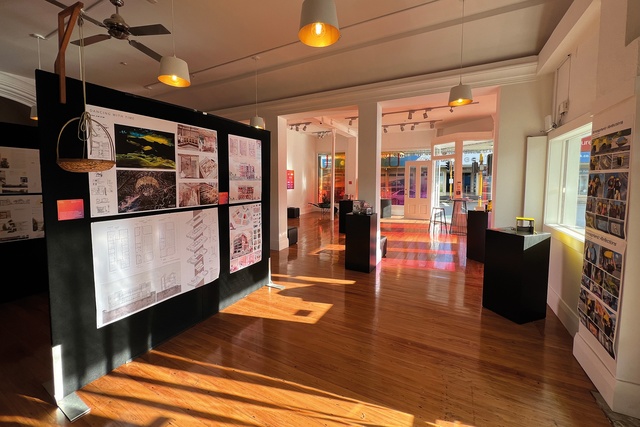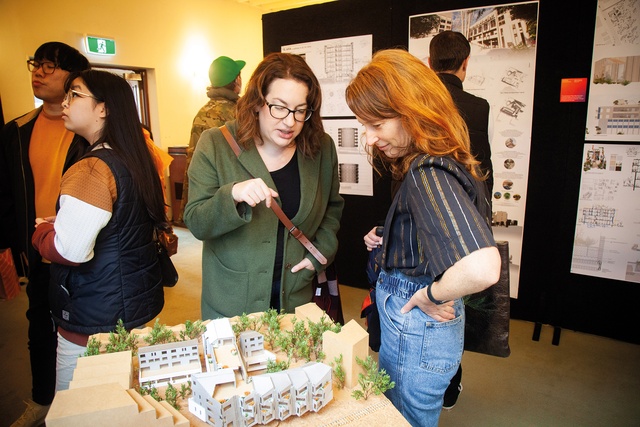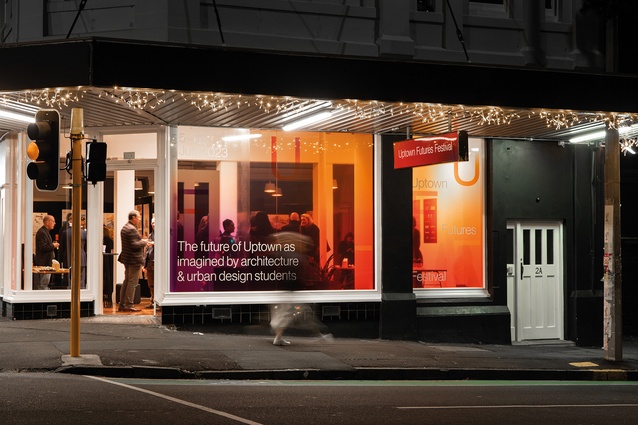Voicing a vision for Uptown
Uptown, where’s that? To most Aucklanders familiar with the isthmus, it’s a part of town just south of the central area, just over the motorway and just a place you go through to get somewhere else. But it wasn’t always like that.
Uptown is what the local business association and residents are calling the area south of Spaghetti Junction: bounded by Upper Symonds Street, Newton Road, Khyber Pass and the northern ends of New North Road and Mount Eden Road. It’s an area that, many decades ago, had a big working-class population, several churches and plenty of shops, venues and light industry.
As a student in the late 1970s/early ’80s, I can recall the Upper Symonds Street area as a shopping hub, with a Farmers, and clothes and furniture shops, even a few restaurants and a nightclub. There was a bit of a music scene there, too. But that was all strangled to death during the traffic engineers’ 50-year reign over Auckland’s urban development.

In the 1960s, the motorway and Spaghetti Junction had cleared swathes of homes from the valley areas and created a moat around the central area. On and off ramps and the Ian McKinnon Drive bypass ensured torrents of car traffic dominated the Uptown area, criss-crossing from motorway to main arterial roads. This engineered dissection and economic developments of the 1980s killed off many of the shops. There was, at one stage, a scheme to build the casino and Sky Tower on the corner of Symonds Street and Khyber Pass but this was eventually moved to its present site in midtown, for better or worse. So, if there is a part of town on the central area fringe that needs some urban design love and attention, this is it.
The central city is flanked by the characterful but gentrified precincts of Parnell and Ponsonby. Now that Karangahape Road is being gutted of its vitality and diversity by the gentrification treatment, it would be great to see the Uptown area evolve into a youthful and funky area of new business and creative start-ups, arts and music venues, eateries and affordable housing through adaptive re-use of existing former light industrial and commercial buildings.
This is the vision of the local business association. Behind this are two game-changers: the Central Rail Link’s Maungawhau station and Kainga Ora’s plans for a very large brownfield development of housing around it. In addition, Auckland Transport is improving walkability, bus services and cycle lanes.
The Uptown Futures Festival (5–12 July) was a series of events, organised by the local business association, aimed at putting flesh on these bones. The Urban Advisory was commissioned to produce a guidebook, An Introduction to Uptown, which aimed to “support students from AUT, Unitec and the University of Auckland’s architecture schools to understand the context of the Uptown precinct”, then architecture schools spent a semester working on design projects. Selected work from this effort was a major feature of the festival, with exhibitions in three locations. There were also a few other events involving speakers, panel discussions and networking for locals.

The student work is difficult to review in detail as it ranged across various years, with some working in groups, some individually and all being in a variety of courses, having additional aims and outcomes related to school programme requirements. Much of it was printed out, allowing close attention, while a hard-to-determine amount was also projected.
The venues varied as well, the flagship location being a prominent heritage building on the Symonds Street/Mount Eden Road corner. This was a great venue, dressed up in festival colours and signage, and staffed with business association people. The other venues were out the back of Kahui St David’s centre — not the best exhibition space but a good choice as the surplus-to-Christian-requirements church was threatened with demolition until bought by a local group through a very successful publicity and fund-raising campaign. The least successful venue was a local brew bar that, despite its popularity, has always seemed to me chaotic and the panels were in a corner with chairs and parked pushchairs making it difficult to see the works.
I would also have liked to see The Urban Advisory’s contextual guide more prominently featured, assisting public understanding of where student work could slot in. As for the Festival’s talks, I diligently attended them all and took copious notes but an architecture magazine isn’t really the place for detailed discussion. Like all talks and panel discussions, they had ups and downs, depending on speakers and topics.
Overall, the student work seemed to be focused mostly on individual buildings rather than urban design, perhaps because of institutional output requirements over-riding the needs of Uptown’s broader precinct planning needs. But, to the public, the cachet of architecture school involvement and the variety of student projects would seem an immensely stimulating vision of possible futures.

The best thing from my urban design perspective and experience in navigating massive redevelopments, such as the SH20 Waterview ring route, is to garner widespread support among a broadly based community, utilising a lot of the local expertise. Then you have a voice when the council and urban development agency arrive with the in-house plans they have developed for what frequently amounts to token consultation. Events such as the Futures Festival steal a march on these agencies, developing ground-up schemes to drive evolution.
When Waka Kotahi was developing designs on Waterview, a colleague from practice and I ran a student competition for mitigation ideas with the support of the local MP and Board. The winning (and very expensive) scheme received lots of media coverage but it was a sacrificial lamb — we were quite happy when the second-placed scheme was built via Environment Court-ordered mitigation, despite engineering difficulties and cost blowouts. But they had to do it; public and political pressure was on our side.
Naturally, all involved in Uptown would like to see more engagement from authorities — the Uptown Business Association has a relationship with the Council through the Business Improvement District scheme (and support from a targeted rate) but I gather Kainga Ora is a bit of a black hole in what’s planned and local engagement — although you can get an idea from plans posted online. But, meanwhile, this Futures Festival is just the thing to engage community and create a vision for evolving the precinct. I am looking forward to next year.














